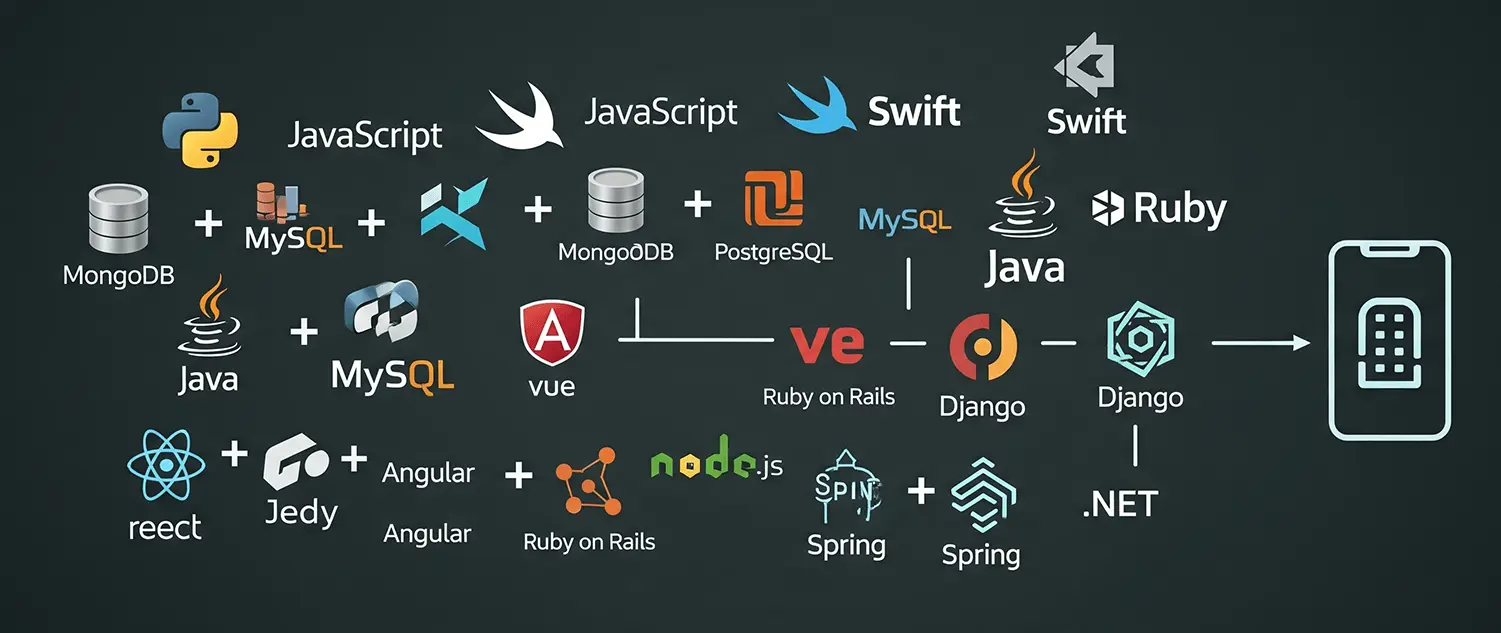
June 16, 2025
The success of your startup app depends not just on the idea, but also on the technology behind it. Choosing the right tech stack ensures scalability, performance, and cost-efficiency while aligning with your business goals. In this guide, we’ll break down the essentials for picking the best tech stack for startups in 2025.
What Is a Tech Stack?
A tech stack is the combination of programming languages, frameworks, tools, and technologies used to build an application. It includes front-end, back-end, databases, and cloud services.
- Front-end
Covers what users see and interact with, like buttons, menus, and layouts.
- Back-end
Handles server logic, databases, and application performance.
- Databases
Store and manage application data securely.
Why Choosing the Right Tech Stack Matters
The tech stack directly impacts app performance, scalability, cost, and long-term success. Startups must balance speed-to-market with future-proofing their applications.
- Performance
The wrong stack can slow down your app and frustrate users.
- Scalability
Tech choices affect how easily your app grows with users.
Factors to Consider When Selecting a Tech Stack
From budget to scalability and security, several factors influence your decision. Startups need to prioritize business goals and user needs before picking technologies.
- Budget
Some stacks are more cost-efficient than others for startups.
- Security
Protecting user data should be a top priority in any stack.
Popular Front-End Technologies
Front-end frameworks like React, Angular, and Vue dominate modern app development thanks to their flexibility and scalability.
- React.js
A popular library for building interactive user interfaces.
- Angular
A full-featured framework ideal for enterprise-scale projects.
Popular Back-End Technologies
Node.js, Django, Ruby on Rails, and .NET are among the most widely used back-end frameworks. Each offers strengths depending on your app’s complexity and performance needs.
- Node.js
Great for real-time applications like chat and streaming apps.
- Django
A secure and scalable Python-based back-end framework.
Databases and Storage Options
Startups can choose between relational databases like PostgreSQL/MySQL or NoSQL options like MongoDB, depending on app requirements.
- PostgreSQL
Powerful open-source relational database.
- MongoDB
Flexible NoSQL database suited for dynamic applications.
Mobile App Tech Stacks
For mobile apps, startups can choose between native development (Swift/Kotlin), cross-platform frameworks (Flutter, React Native), or hybrid solutions.
- Flutter
Google’s cross-platform framework for fast mobile app development.
- React Native
Allows code sharing across iOS and Android platforms.
How to Future-Proof Your Tech Stack
Technology evolves fast. Choosing widely adopted, well-documented frameworks ensures long-term support and easier scaling.
- Adoption rate
Pick technologies widely supported by the developer community.
- Documentation
Ensure frameworks are well-documented for easier maintenance.
